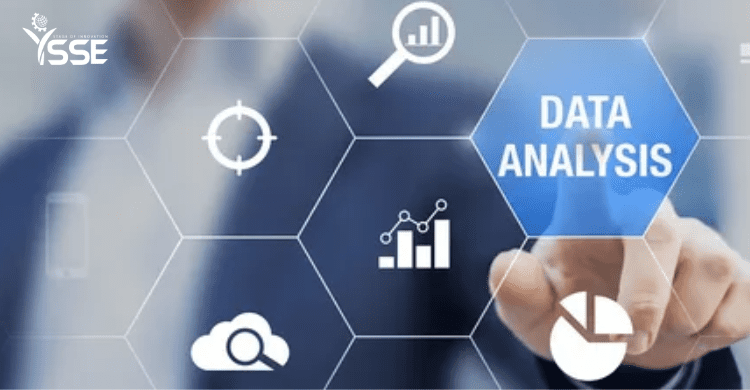Data analysis alludes to the process of monitoring, modifying, elucidating, modeling and sluicing data with a goal of valuable perception ,discovering useful information which can be wielded to make various serious decisions.
It can be the biggest mistake to speculate before anyone has proper data. Instead of fitting theories properly, one must twist theories to facts.When we observe and analyze data deeply, it helps us to provide better solutions and make better decisions. Companies are acquainted with the profits of exploring data. It is the first stage of research which can help an institution to individualize customers’ reciprocation.
The 4 Types of Data Analysis
Descriptive Analysis:
It is the most usable, simplest data analysis system in business nowadays. It is the fundamental point of all data insight. Its biggest use in business is to track KPIs (Key Performance Indicators). KPIs give information about how a business is performing based on its benchmark. Its main question is “What Happened?”
Diagnostic Analysis:
This analysis drills down to find the causes of insights. Organizations use this type of analysis because it makes more connections between data and recognizes the pattern of all kinds of behaviors.When new problems come, it turns out that you have already collected specific data related to the problem and having the data at your disposal ends up repeating the work and making all the problems connected.
Predictive Analysis:
“What is likely to happen?” is the motto of this analysis. Such analysis is preliminary to inform future results by using past analysis.This type of analysis is usually up from descriptive. It uses summary data to make logical analytical predictions and this analysis requires additional technology and manpower. The accuracy of the prediction depends on the quality and detail of the data.
Prescriptive Analysis:
The ultimate type of data analysis is highly sought after, but few organizations can perform it. Prescriptive analysis is the perimeter of data analysis, which combines insights from all precursory analyzes to make current decisions about a problem. AI consumes large amounts of data to learn relentlessly and use it to make informative explanations. And that’s why AI is the perfect instance of prescriptive analysis. Present days, most of the data driven companies like Apple, Netflix, Facebook use this analysis and AI to improve their decision making.
Where is Data Analytics used?
Any organization or business uses data analytics to inform their decisions and improve their performance. Industries ranging from Amazon and Netflix to Starbucks and General Electric integrate data into their business plans to improve their business performance. It is used by researchers to reduce and interpret data in specific tasks. The process of data analysis helps to reduce a large body of data into smaller pieces.
3 essential processes while data analysis:
The first is data organization. Summarization and categorization are used together for data reduction and contribute to the second known method. It helps to find themes in the data to identify and link. The third and final way is data analysis – this is done in both top-down and bottom-up ways by researchers.
Considerations in research data analysis
- Researchers must have research skills to analyze and manipulate data, and be trained in research practice. Researchers need to be rational in choosing statistical methods to gain better data insights.
- As research and data analysis projects differ by scientific discipline, the beginning of the analysis helps to design a survey questionnaire, select data collection methods.
- The objective behind data analysis in research is to present accurate and reliable data. Avoiding statistical errors and addressing challenges like missing data, data transformation, graphical representation.
Some Analytical implementation in data analysis
Some of the data analytics networks are: DataPine, Looker, NIME, Lexilytics, SAS Preview, RapidMiner, Talend and NodeXL. The mentioned tools perform different analysis from data collection to data sorting and searching.
Overall, an example of data analysis is when we make decisions in everyday life by evaluating what has happened in the past or what will happen if that decision is made. Basically, it is the process of analyzing past and future and making decisions based on that analysis.
to read more blogs , click here
Writer,
Ayesha Siddika Hamim
Intern, Content Writing Department,
YSSE

